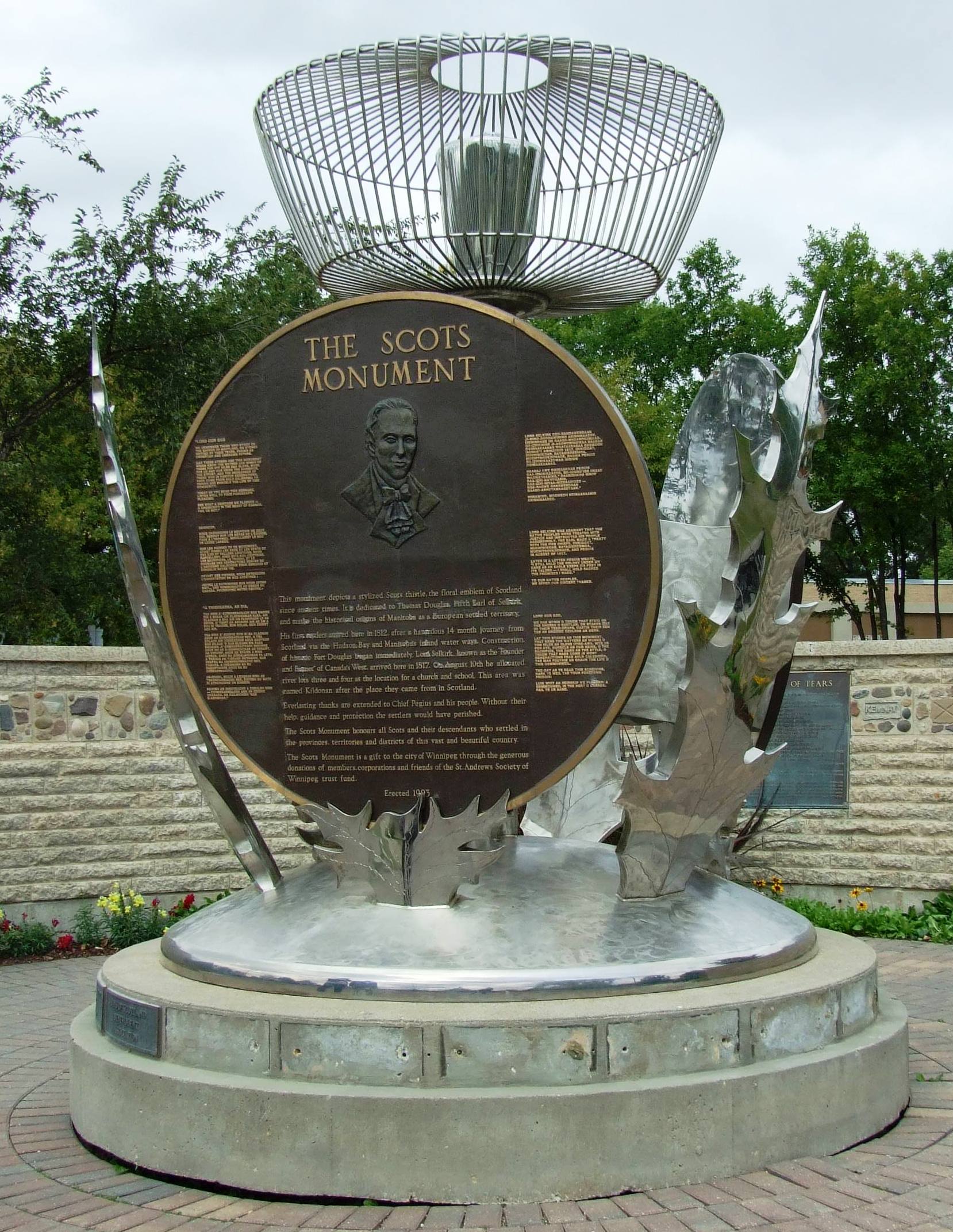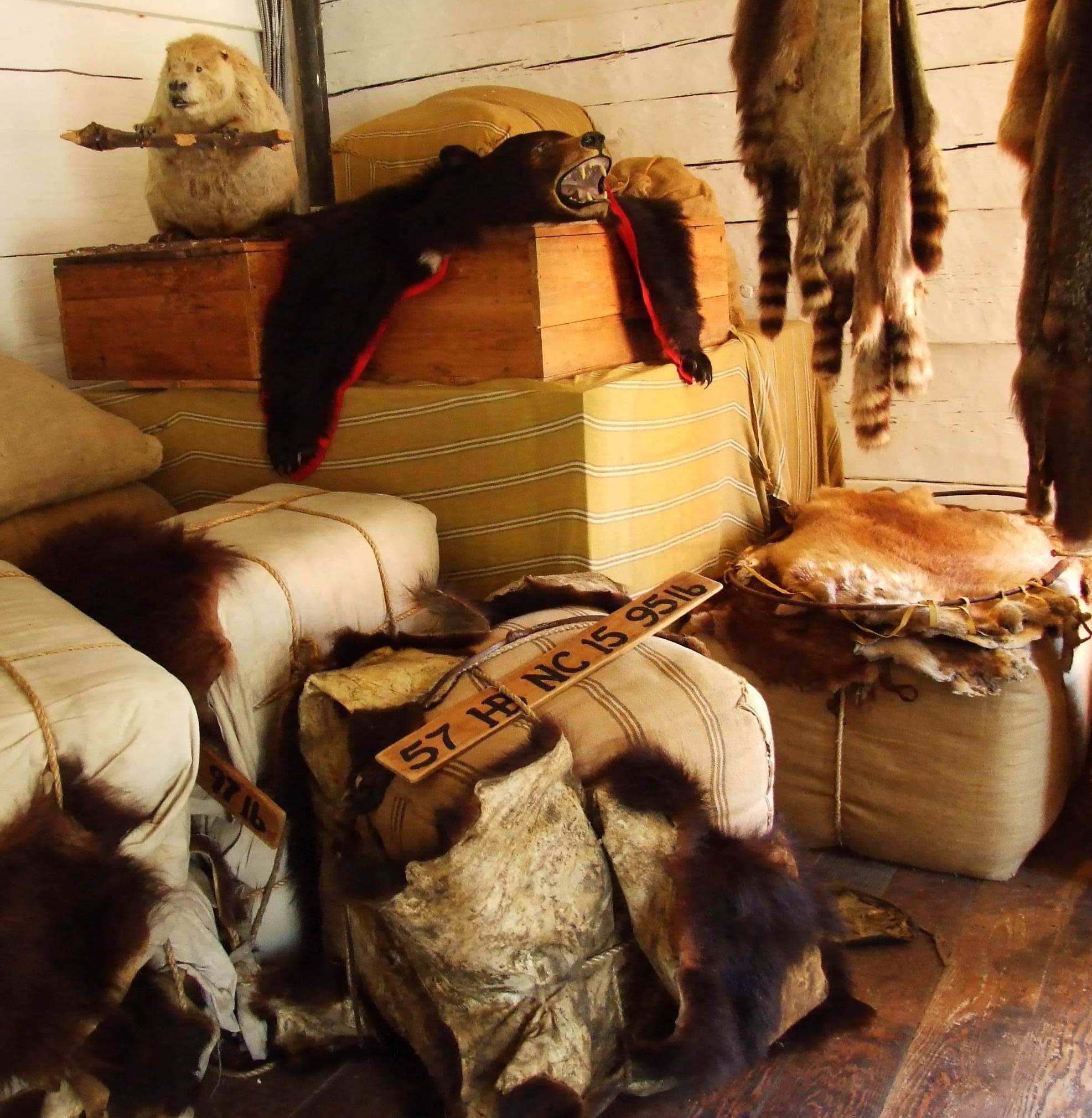Part III – Manitoba to British Columbia
MANITOBA
 The next stop was in Winnipeg in the province of Manitoba. John D Perrin, President and Chair of the Board for The Scottish Heritage Council of Manitoba Inc, Red River 200 and vice-President of The St. Andrew’s Society of Winnipeg was enthused by the project and has offered to set up a group to co-ordinate Winnipeg’s contribution. He invited our team to accompany him to a Red River 200 event at Kildonan Presbytery Church.
The next stop was in Winnipeg in the province of Manitoba. John D Perrin, President and Chair of the Board for The Scottish Heritage Council of Manitoba Inc, Red River 200 and vice-President of The St. Andrew’s Society of Winnipeg was enthused by the project and has offered to set up a group to co-ordinate Winnipeg’s contribution. He invited our team to accompany him to a Red River 200 event at Kildonan Presbytery Church.
Red River 200 is a celebration of the bicentenary of the arrival of the Selkirk Settlers in Manitoba from Scotland in 1812, and the 200th anniversary of agriculture in Manitoba. Kildonan Presbytery Church is based on Kildonan Church in the Strath of Kildonan, near Helmsdale, Scotland whence the Selkirk settlers came. Thomas Douglas, 5th Earl of Selkirk, sponsored the immigrants during the clearances and they settled on land next to the Red River in Winnipeg. The church remains consecrated but the members use a more recently built church a short walk away. However, the Friends of Historic Kildonan Church committee are seeking to restore and maintain the building. It is an important part of their Scottish heritage and the community in Winnipeg. Thomas Douglas’ descendant James Douglas-Hamilton (Earl of Selkirk) was an invited guest and speaker and we had a chance to update him on the Diaspora Tapestry project. The Earl is well acquainted with our activities, as you can discover here. Another invited guest was Jacquie Aitken, Archive Officer from Timespan, who was visiting from Scotland. We hope to continue our conversation with her about linking for events during the Homecoming as well as in the period leading up to 2014.
John Perrin generously gave of his time during what was a very busy period for him with the Red River events, in order to drive our team to various locations important to the settler descendants.
The Scots Thistle Monument, overlooking the Red River, was erected in May 1994 in memory of all the Scots Highlanders who settled in the Red River Valley. Located beside it, the Cairn of Tears remembers the Scottish emigrants who travelled to Canada and the all over the world. Both the Cairn of Tears and the Canadian Boat Song plaques are embedded in a wall that features a stone from every parish in Scotland. Also close to the Red River is a statue known as the Exiles, the twin of one in Helmsdale called the Emigrants.
Our team were then driven to Seven Oaks House on the Inkster plot where the battle of Seven Oaks took place in 1816. This was a conflict between a North West Company brigade consisting of a group of Métis led by Cuthbert Grant (of First Nation and Scottish descent), and Robert Semple the Governor of the Red River colony with his Hudson Bay men. John spoke of the friendship between the settlers and Chief Peguis of Peguis First Nation who had helped the settlers on their arrival and contributed to their survival in their new environment. Peguis had tried to warn Semple of the intentions of the Hudson Bay Company and had stayed behind to help bury the dead, including Semple and twenty of his defeated men.
BRITISH COLUMBIA
After a day in Manitoba, it was time to fly to Vancouver. Travelling by air train and waterbus, Gillian and Yvonne went to Burnaby, east of Vancouver. Surrounded by beautiful hills (strictly not mountains, they were told!) and wonderful expanses of water sporting vessels of every shape and size, Vancouver and its surrounds are very dramatic. Apart from being involved in business, Irene Barr, President of Business Centre Solutions, and Barb Diggins, SFU, have taken over the e-newsletter, the Scottish Express. In response to a news article, Jocelyn Pritchard and Linda met our representatives. Jocelyn was keen to present the project at the next meeting of the Sinclair Clan and this should be a rich source of stories and stitchers. Although Linda isn’t Scottish, she is an embroiderer and gave us some ideas for contacting embroidery guilds. Of course we aren’t necessarily looking for expert embroiderers – enthusiasm is the only essential criterion! Then Barb treated Gillian and Yvonne to a visit to the university on top of Burnaby Hill. The university is named after Simon Fraser, an explorer of Scottish ancestry who under the employ of the ever significant North West Company navigated the Fraser River to provide a trade route to the Pacific. The explorer David Thompson later named the Fraser River after him.
Brandon Gabriel, a regular visitor to Prestonpans during the 3 Harbours Arts Festival, gave up his day to fetch and drive our team to Fort Langley National Historic Site. Brandon is part of the Kwantlen First Nation of the Coast Salish based in Fort Langley. The primary resource as well as a source of income for the Coast Salish was the rich supply of salmon in the Fraser River. When the Fort was established salmon became an important trade item. Gillian and Yvonne were guided around the site, a post  established in 1827 under the direction of James McMillan, Chief Trader of the Hudson’s Bay Company, in order to trade with the First Nations of the west coast and to introduce some agricultural development. There they saw items such as blankets and metal tools that would be exchanged with the trappers for fur. A range of pelts from beaver to sea-otter would then make their way to Europe. Felted beaver fur top-hats were in vogue until the mid-19th century. The voyageurs who collected the trade items and brought back the fur were usually men of short stature with good arm strength for rowing. They would wear a brightly coloured sash around their waists to protect their backs from the 95lb load of furs they would carry. They often married Métis or First Nation women, relationships that would be beneficial to both parties in cementing trading partnerships and sharing skills. Isabel Gunn was a female voyageur who dressed as a man and joined the Hudson’s Bay Company. She was only discovered after giving birth to a son. Our team were shown the “Big House” where the factor would live, as well as the employees’ rather smaller quarters – a Scottish example and a French example.
established in 1827 under the direction of James McMillan, Chief Trader of the Hudson’s Bay Company, in order to trade with the First Nations of the west coast and to introduce some agricultural development. There they saw items such as blankets and metal tools that would be exchanged with the trappers for fur. A range of pelts from beaver to sea-otter would then make their way to Europe. Felted beaver fur top-hats were in vogue until the mid-19th century. The voyageurs who collected the trade items and brought back the fur were usually men of short stature with good arm strength for rowing. They would wear a brightly coloured sash around their waists to protect their backs from the 95lb load of furs they would carry. They often married Métis or First Nation women, relationships that would be beneficial to both parties in cementing trading partnerships and sharing skills. Isabel Gunn was a female voyageur who dressed as a man and joined the Hudson’s Bay Company. She was only discovered after giving birth to a son. Our team were shown the “Big House” where the factor would live, as well as the employees’ rather smaller quarters – a Scottish example and a French example.
Gillian and Yvonne parted from Brandon at Horseshoe Bay where they caught the ferry to Vancouver Island. They drove to Chemainus for a brief visit to the 8th Global Murals Conference 2012, where they had a chance to promote the project, and then on to a meeting at Nanaimo Museum the following day. Aimee Greenaway, the Program and Volunteer Coordinator, and Jan Peterson were both enthusiastic about the project, keen to help and to exhibit the tapestry in 2015. Aimee showed them the museum’s feature exhibition of beautiful mixed media textile pieces made by Cecile Jacobs. In display cases with these artworks were pieces from the museum’s textile collection. A group of volunteers conserve this collection, meaning a group of very keen and able stitchers is close at hand! Jan very kindly gave us a copy of her book, Kilts on the Coast: The Scots who built BC. Robert Dunsmuir helped establish coal mines in the Nanaimo harbour area whilst an employee of the Hudson’s Bay Company, and later mined in Nanaimo as one of the first independent miners. He built the Craigdarroch Castle in Victoria, a Victorian status symbol for a coal baron.
In Victoria, the Dean of Christ Church Cathedral, Dr Logan McMenamie, Terry Jones, Janet Davies the Parish Administrator, a representative of the University of Victoria, and members of the St. Andrew’s and Caledonian Societies discussed the possibility of exhibiting the Battle of Prestonpans Tapestry in Victoria in 2013. The very positive discussion then led on to the Diaspora project. Everyone was very interested and there are certain to be a few stitchers among the women from the two societies. The university has a Scottish Studies programme which should also prove a good resource, in addition to the departments at Guelph University and Simon Fraser University.
At length, after two weeks of relentless travel, the long trek across Canada drew to a close… although there was time for one last meeting before the flight home. Jennifer Verrall is a weaver who visits Scotland and although she is not of Scottish descent she had discovered this website and was fascinated by the project: she will put the word out that we are looking for stitchers.
The Scottish influence in Canada is from east to west, north to south. There will be many stories and we need Canadians of Scottish descent to offer opinions as to which ones are the most important, and which ones should be represented on the embroidered panels. If we have learned anything from Gillian and Yvonne’s experiences it is that, as we always suspected, the challenge of condensing such a vast and rich cultural legacy into just a handful of snapshots is immense indeed!
